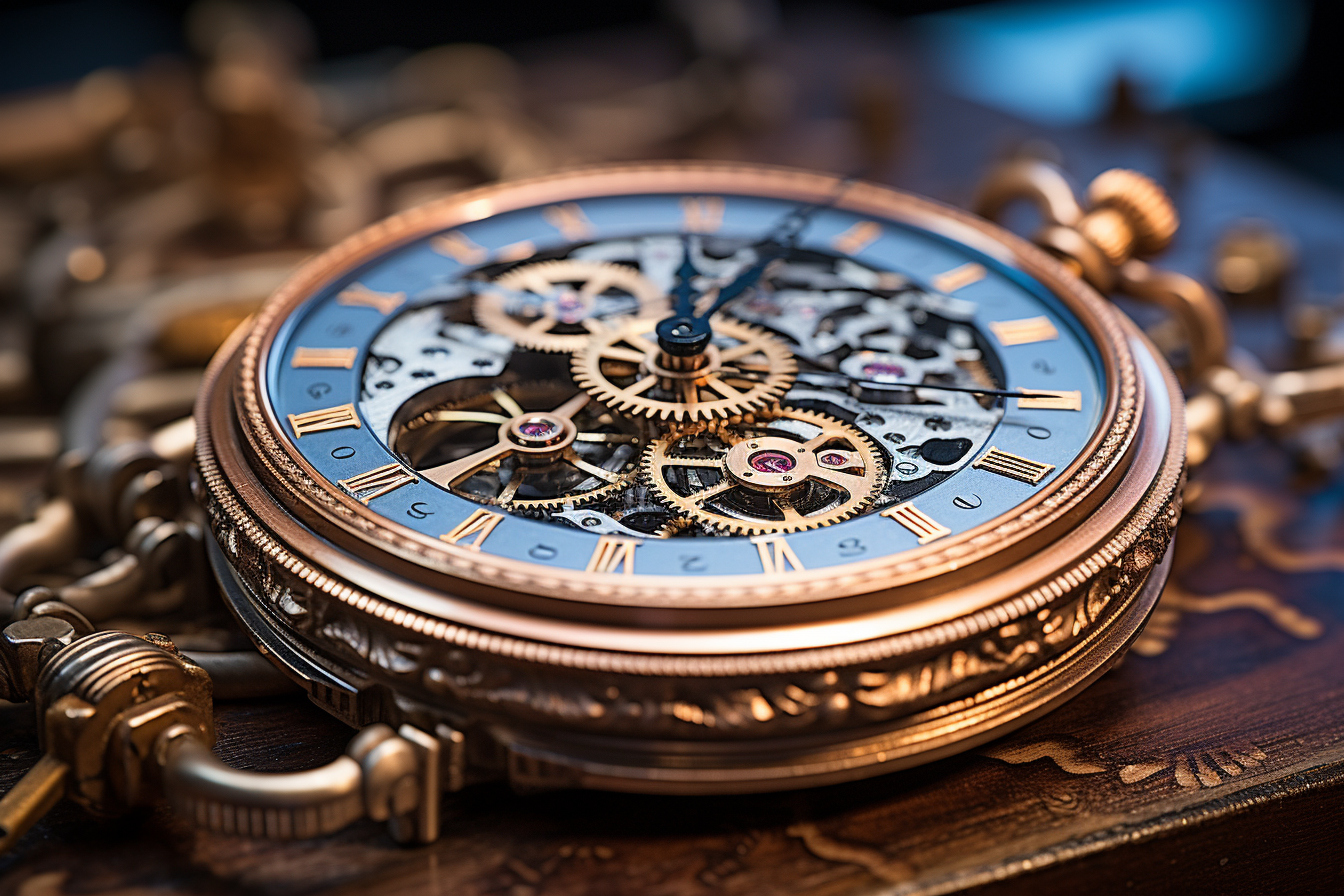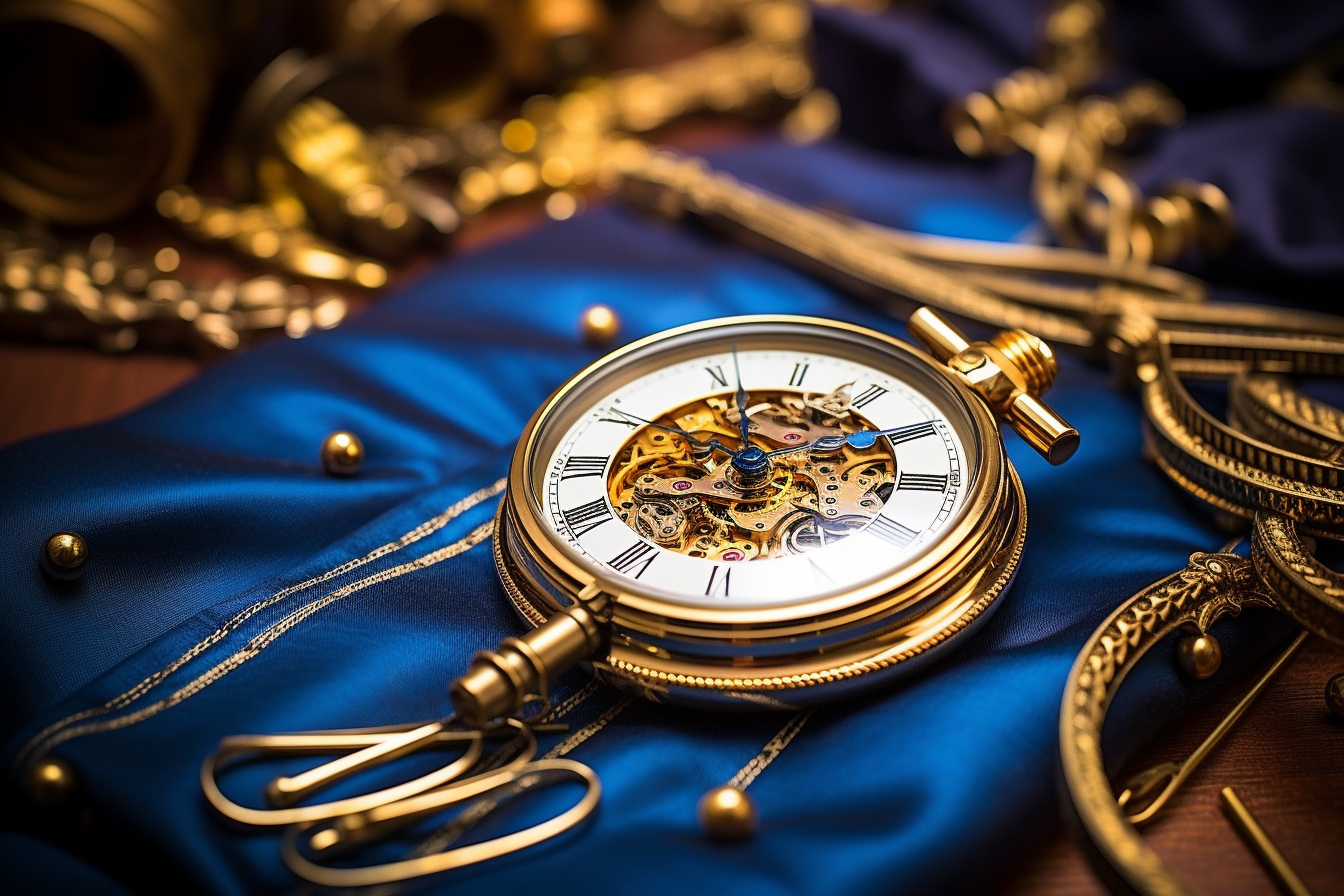You have in your hands an old pocket watch, an object that is both precious and steeped in history. But now, it no longer works and you are determined to bring it back to life.
1. Careful disassembly
The first step in repairing is to carefully disassemble your pocket watch. Take a magnifying glass and a screwdriver suitable for the small screws on the case. Be sure to note each disassembly step to facilitate subsequent reassembly.

2. Deep cleaning
Once your pocket watch has been disassembled, it is time for a thorough cleaning. Use a mixture of mild soap and warm water to clean the various metal parts. Remember to also clean the dial and hands carefully.
3. Checking defective parts
Once cleaned, carefully examine the different parts of your pocket watch. Check for worn, broken or missing parts. These can be springs, gears or screws. If you identify defective parts, you will need to replace them.
4. Replacement of defective parts
Once the faulty parts have been identified, it is time to replace them. If you have some knowledge of watchmaking, you can obtain the necessary parts and install them yourself. Otherwise, it is recommended to entrust this step to a professional to avoid further damage to your pocket watch.
5. Reassembly and adjustment
Once all the parts have been replaced, it’s time to reassemble your pocket watch. Refer to the notes you took during disassembly to put each item back in its place. Be sure to tighten the screws well, but not over-tighten. Then, adjust the clockwork to ensure optimal operation of your watch.
6. Testing and adjustments
Your pocket watch is assembled again, it’s time to test it. Reassemble it completely and observe its operation for a few days. Make sure the hands move correctly and the clockwork remains accurate. If necessary, make further adjustments to perfect the operation of your pocket watch.
7. Polishing and refinishing
Once you are satisfied with the functioning of your pocket watch, you can move on to the final step: polishing and refinishing its case. Use specific products to clean and polish the metal, to restore its shine to your watch. Remember to take all necessary precautions to avoid damaging the dial or hands.
The sentimental value of old watches
Beyond the technical aspect of repairing a pocket watch, it is important to recognize the sentimental value that these items can carry. An old pocket watch represents not only a watchmaking object but often a family story, an heirloom passed down from generation to generation.
The pocket watch can bear witness to important historical or family events, and every scratch, every wear and tear can tell a story. It is not just an object, but a tangible memory of the past. Repairing such a watch is therefore not only a question of mechanics, but also of preserving memories and passing on stories.
Each pocket watch has a uniqueness, whether it comes from its mechanism, its design or its history. The materials used, the engravings, or even the chain that accompanies it, can give clues about the time of its manufacture and the people who owned it.
In addition, the repair or restoration process is often motivated by a desire to revive memories or pay tribute to a loved one. It is for this reason that the repair should not only aim to make the watch functional, but also to preserve its integrity and sentimental value.
It is therefore advisable, during repairs, to keep the original parts as much as possible, even if they are worn or slightly damaged. An original piece, even patinated by time, is often more valuable than a new piece, because it is part of the history of the watch.
Understand the importance of watchmaking artisans
If you are still unfamiliar with the world of watchmaking, it may be difficult to understand the importance of the role played by watchmaking artisans in the preservation of pocket watches. These professionals are not only technicians: they are also the guardians of memory and watchmaking traditions.
An artisan watchmaker is not simply trained in repair techniques. He also has in-depth knowledge of the history of watchmaking and the different manufacturing methods used over the centuries. This expertise allows him to choose the best restoration method for each watch, respecting its history and integrity.
The pocket watch, with its delicate mechanism and its often rare parts, requires particular attention and precision. Each intervention on an old watch is a challenge: it is about finding the right balance between preservation and modernization. For example, replacing a defective part with a contemporary part can improve the functioning of the watch, but it can also take away part of its authenticity.
The relationship between the watch owner and the watchmaker is also essential. The watchmaker must listen to the owner’s concerns and wishes, understand the sentimental value of the watch and offer solutions tailored to each situation. This collaboration ensures that the watch is not only restored to working order, but also retains its charm and history.
The art of restoration: preserving authenticity while modernizing
Restoring an old pocket watch is a true art. Beyond simple mechanical repair, it requires a holistic approach, which takes into account both the integrity of the object and the expectations of the owner. It is in this alchemy that the real challenge lies: how to merge tradition and modernity to offer a second life to a watch while respecting its original soul?
The pocket watch, beyond its primary function of measuring time, is an object imbued with memories, history and emotion. The decision to restore it rather than replace it says a lot about the desire to maintain this link with the past. However, restoration does not necessarily mean absolute preservation of the original. Sometimes, a few touches of modernity can enhance the object, bringing it comfort of use and reliability while retaining its character.
The key lies in discernment. Knowing where and how to introduce modern elements without overwhelming the original essence of the watch is crucial. Current materials, for example, can offer interesting alternatives. Stronger watch glasses or higher quality lubricating oils can be used to improve the durability and performance of the watch.
However, the soul of an old pocket watch is found in its details: the ticking of its mechanism, the delicate engravings on its case or the aged charm of its dial. These elements must be treated with the greatest respect, because they are what make each watch unique. If an item is too damaged to keep, finding a period piece or faithful reproduction is better than using a generic modern piece.












